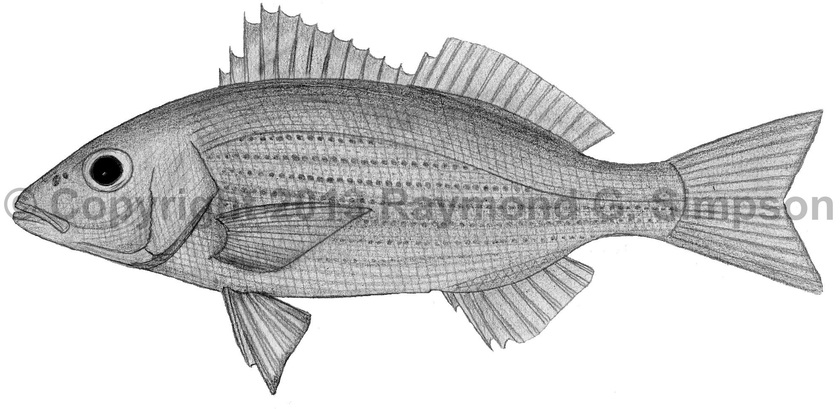
Common Name
Roughneck Grunt
Year Described
Steindachner, 1868
Identification
Dorsal Fin: XII, 13-15
Anal Fin: III, 6-7
Gill Rakers: 10-12 (lower limb of first arch)
Lateral Line Scales: 49-52
Body oblong and compressed with a straight profile and projecting snout. Eye relatively large. Mouth moderate (maxillary reaches beyond anterior margin of eye). Soft dorsal fin with scales at the base. Preopercle serrate. A notch between spiny and soft dorsal fin. Soft dorsal fin long and low. Second anal fin spine strong. The pectoral fins are relatively small. There are 5-6 scales above and 10 below the lateral line.
Color
Body silvery, grading to bronze or gray dorsally. Several horizontal stripes on body formed by dark spots on scale rows. Fins dusky with lighter spines.
Size
Maximum size to 25cm TL.
Habitat
Inshore waters over soft and hard bottoms. Frequently in low salinity estuaries.
Range
The Caribbean islands from Cuba to the Lesser Antilles. Also continental waters from the Yucatan to Brazil.
References
Lindeman, K.C. 2002. Haemulidae (pp. 1522-1550). In: Carpenter. 2002. The living marine resources of the Western Central Atlantic. Vol. 3: Bony fishes part 2 (Opistognathidae to Molidae). FAO Species Identification Guides for Fisheries Purposes. American Society of Ichthyologists and Herpetologists Special Publication No. 5. FAO of the U.N., Rome.
Other Notes
More closely related to eastern Pacific species in Haemulopsis than it is to any other grunt described from the western Atlantic.